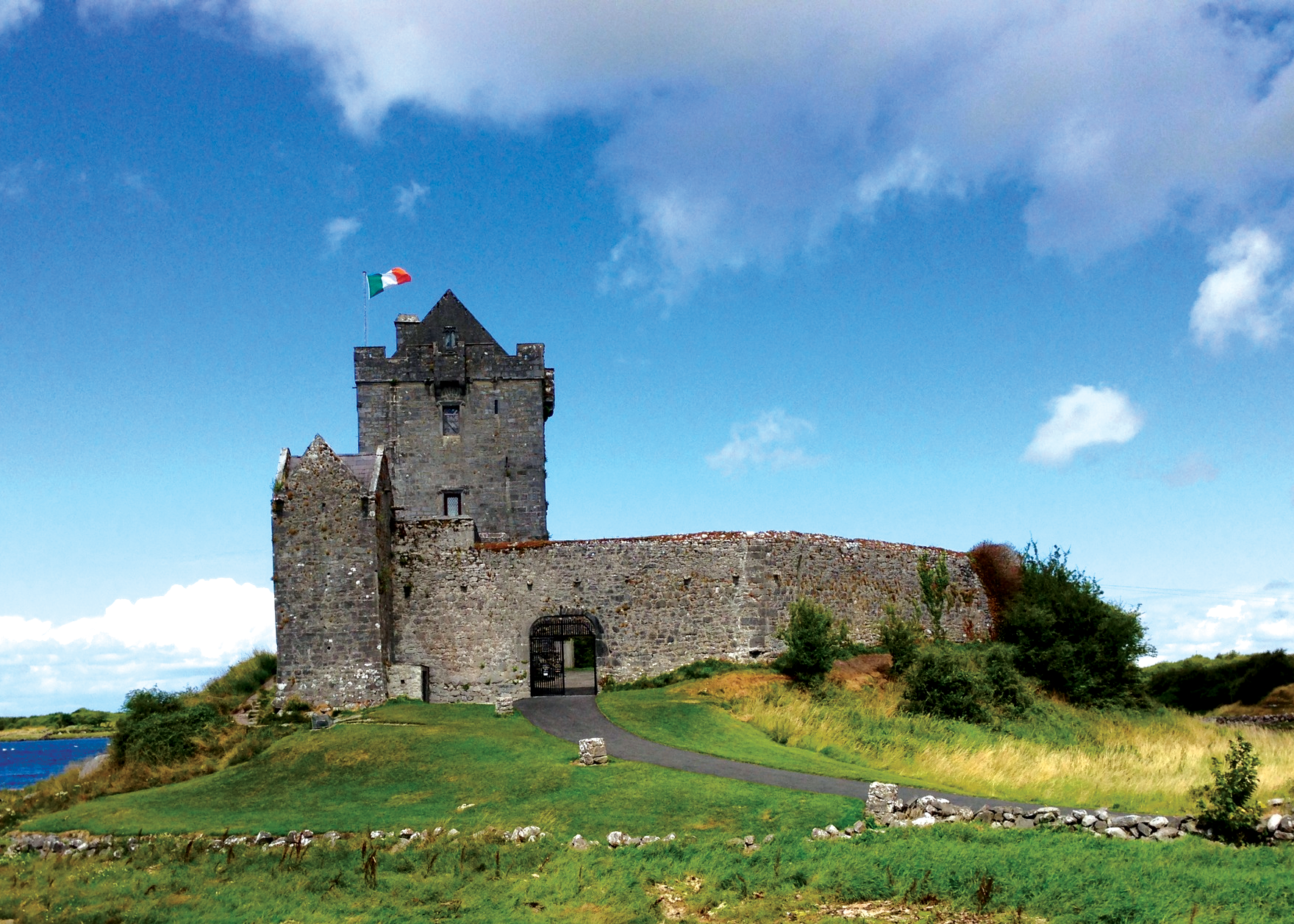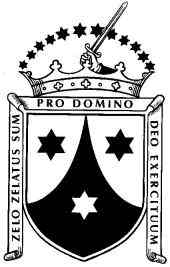|
Edmond MacHugo
Edmond MacHugo (alias MacCoug, MacCook, Cook), Irish Chief of the Name, alive 1559. MacHugo is notable as one of the first certain bearers of the surname MacHugo, and the only attested Chief of the Name. The family being a sept of the Burke family of Clanricarde, County Galway. The family took their name from a Hugh or Hugo Burke, alive sometime in the late 14th century. Edmond was listed as "Chief of his Nation" in a Fiant dated 1570, and resided at Killeenadeema castle, now destroyed. His son Geoffrey MacHugo (''Sheron MacCoug of Killyndyma'', fl. 1570 - 6 October 1605) had issue Ulick, James, Edmond Reagh and William, from whom are descended many bearers of the name MacHugo. Some bearers of the name are buried in the ruined Carmelite abbey of Loughrea. References * ''The Book Of Dead Names'', Adrian James Martyn, Journal of the Genealogical Society of Ireland The Genealogical Society of Ireland ( ga, Cumann Geinealais na hÉireann) is a voluntary non-governmental organi ... [...More Info...] [...Related Items...] OR: [Wikipedia] [Google] [Baidu] |
Irish People
The Irish ( ga, Muintir na hÉireann or ''Na hÉireannaigh'') are an ethnic group and nation native to the island of Ireland, who share a common history and culture. There have been humans in Ireland for about 33,000 years, and it has been continually inhabited for more than 10,000 years (see Prehistoric Ireland). For most of Ireland's recorded history, the Irish have been primarily a Gaelic people (see Gaelic Ireland). From the 9th century, small numbers of Vikings settled in Ireland, becoming the Norse-Gaels. Anglo-Normans also conquered parts of Ireland in the 12th century, while England's 16th/17th century conquest and colonisation of Ireland brought many English and Lowland Scots to parts of the island, especially the north. Today, Ireland is made up of the Republic of Ireland (officially called Ireland) and Northern Ireland (a part of the United Kingdom). The people of Northern Ireland hold various national identities including British, Irish, Northern I ... [...More Info...] [...Related Items...] OR: [Wikipedia] [Google] [Baidu] |
Chief Of The Name
The Chief of the Name, or in older English usage Captain of his Nation, is the recognised head of a family or clan (''fine'' in Irish and Scottish Gaelic). The term has sometimes been used as a title in Ireland and Scotland. In Ireland In Elizabethan times, the position of Chief of the Name was more important to some Irish leaders than English titles. There are instances where Norman lords of the time like FitzGerald, took to using the Gaelic style of "The" or "Mór" (great) to indicate that the individual was the primary person of his family in Ireland. Chiefs were elected from their clan's " Derbfine", a group of cousins who were all at least the great-grandsons of former chiefs. In the Tudor period the Kingdom of Ireland was established in 1542, and many of the former autonomous clan chiefs were assimilated under the English legal system via the policy of surrender and regrant. At the same time mentions were made in official records of locally-powerful landlords describ ... [...More Info...] [...Related Items...] OR: [Wikipedia] [Google] [Baidu] |
Sept
A sept is a division of a family, especially of a Scottish or Irish family. The term is used in both Scotland and Ireland, where it may be translated as ''sliocht'', meaning "progeny" or "seed", which may indicate the descendants of a person (for example, ''Sliocht Bhriain Mhic Dhiarmada'', "the descendant of Brian MacDermott"). The word may derive from the Latin ''saeptum'', meaning "enclosure" or "fold", or via an alteration of "sect". Family branches ''Síol'' is a Gaelic word meaning "progeny" or "seed" that is used in the context of a family or clan with members who bear the same surname and inhabited the same territory,) was a term for patrilineal groups and po ...), which collapsed after the Tudor Conquest in the 16th century. The Irish, when speaking of themselves, employed their term "clann", which means "children" in Irish. See also * Dit name * Irish genealogy * Mac Amhlaoibh and Mac Amhalghaidh (Irish septs) * Sippe References Further reading Septs of ... [...More Info...] [...Related Items...] OR: [Wikipedia] [Google] [Baidu] |
House Of Burke
A house is a single-unit residential building. It may range in complexity from a rudimentary hut to a complex structure of wood, masonry, concrete or other material, outfitted with plumbing, electrical, and heating, ventilation, and air conditioning systems.Schoenauer, Norbert (2000). ''6,000 Years of Housing'' (rev. ed.) (New York: W.W. Norton & Company). Houses use a range of different roofing systems to keep precipitation such as rain from getting into the dwelling space. Houses may have doors or locks to secure the dwelling space and protect its inhabitants and contents from burglars or other trespassers. Most conventional modern houses in Western cultures will contain one or more bedrooms and bathrooms, a kitchen or cooking area, and a living room. A house may have a separate dining room, or the eating area may be integrated into another room. Some large houses in North America have a recreation room. In traditional agriculture-oriented societies, domestic animals such ... [...More Info...] [...Related Items...] OR: [Wikipedia] [Google] [Baidu] |
Clanricarde
Clanricarde (; ), also known as Mac William Uachtar (Upper Mac William) or the Galway Burkes, were a fully Gaelicised branch of the Hiberno-Norman House of Burgh who were important landowners in Ireland from the 13th to the 20th centuries. Territory The territory, in what is now County Galway, Ireland, stretched from the barony of Clare in the north-west along the borders of County Mayo, to the River Shannon in the east. Territories Clannricarde claimed dominion over included Uí Maine, Kinela, de Bermingham's Country, Síol Anmchadha and southern Sil Muirdeagh were at times at war. Those clans excepted the family’s claims on varying occasions as well, and many family members were ceremonially brought into the Irish heritage. Title The Clanricarde, was a Gaelic title meaning ''"Richard's family"'', or ''"(head of) Richard's family"''. The Richard in question was Richard Mór de Burgh, 1st Lord of Connacht (died 1243), son of William de Burgh, whose great-great grandson ... [...More Info...] [...Related Items...] OR: [Wikipedia] [Google] [Baidu] |
County Galway
"Righteousness and Justice" , anthem = () , image_map = Island of Ireland location map Galway.svg , map_caption = Location in Ireland , area_footnotes = , area_total_km2 = 6151 , area_rank = 2nd , seat_type = County town , seat = Galway , population_total = 276451 , population_density_km2 = auto , population_rank = 5th , population_as_of = 2022 , population_footnotes = , leader_title = Local authorities , leader_name = County Council and City Council , leader_title2 = Dáil constituency , leader_name2 = , leader_title3 = EP constituency , leader_name3 = Midlands–North-West , subdivision_type = Country , subdivision_name = Ireland , subdivision_type1 = Province , subdivision_name1 = Connacht , subdivisi ... [...More Info...] [...Related Items...] OR: [Wikipedia] [Google] [Baidu] |
Fiant
A fiant was a writ issued to the Irish Chancery mandating the issue of letters patent under the Great Seal of Ireland. The name ' comes from the opening words of the document, ', Latin for "Let letters patent be made". Fiants were typically issued by the chief governor of Ireland, under his privy seal; or sealed by the Secretary of State, who served as "Keeper of the Privy Seal of Ireland", just as the English Secretary of State did in England. Fiants dealt with matters ranging from appointments to high office and important government activities, to grants of pardons to the humblest of the native Irish. Fiants relating to early modern Ireland are an important primary source for the period for historians and genealogists. The Tudor fiants were especially numerous, many relating to surrender and regrant. A fiant often provides more information than the ensuing letters patent recorded on patent rolls. There are also fiants for which the patent roll does not list any letters pate ... [...More Info...] [...Related Items...] OR: [Wikipedia] [Google] [Baidu] |
Killeenadeema
Killeenadeema ( ga, Cillín a Díoma) is a civil parish in County Galway, Ireland. It contains most of the Derrybrien mountains, which hold the Derrybrien Wind Farm. Name The name in Irish is ''Chillín a Díoma'', where ''cillín'' means "little church". Thus, it means "Chapel of Díoma". Location Killeenadeema is in the barony of Loughrea in County Galway, Ireland. The civil parish has an area of . The town of Loughrea lies on the north shore of Lough Rea, a lake. Killeenadeema includes the southern part of Lough Rea and extends south to the border with County Clare. It contains the Derrybrien Wind Farm. The R353 road crosses the southern part of the parish, running through Derrybrien. Adjoining parishes are Ardrahan, Ballynakill (Leitrim barony), Feakle (Clare), Kilchreest, Kilconickny, Killinan, Kilteskill, Kilthomas and Loughrea. Church The corresponding Catholic parish is in the Diocese of Clonfert. The Killeenadeema Graveyard about south of the lake contains the ru ... [...More Info...] [...Related Items...] OR: [Wikipedia] [Google] [Baidu] |
Geoffrey MacHugo
Geoffrey, Geoffroy, Geoff, etc., may refer to: People * Geoffrey (name) Geoffrey is an English and French masculine given name. It is generally considered the Anglo-Norman language, Anglo-Norman form of the Germanic Compound (linguistics), compound 'god' and 'peace'. It is a derivative of Dutch Godfried, German Go ..., including a list of people with the name * Geoffroy (surname), including a list of people with the name * Geoffrey of Monmouth (c. 1095–c. 1155), clergyman and one of the major figures in the development of British history * Geoffrey I of Anjou (died 987) * Geoffrey II of Anjou (died 1060) * Geoffrey III of Anjou (died 1096) * Geoffrey IV of Anjou (died 1106) * Geoffrey V, Count of Anjou (1113–1151), father of King Henry II of England * Geoffrey II, Duke of Brittany (1158–1186), one of Henry II's sons * Geoffrey, Archbishop of York (c. 1152–1212) * Geoffroy du Breuil of Vigeois, 12th century French chronicler * Geoffroy de Charney (died 1314), Preceptor ... [...More Info...] [...Related Items...] OR: [Wikipedia] [Google] [Baidu] |
Carmelite
, image = , caption = Coat of arms of the Carmelites , abbreviation = OCarm , formation = Late 12th century , founder = Early hermits of Mount Carmel , founding_location = Mount Carmel , type = Mendicant order of pontifical right , status = Institute of Consecrated Life , membership = 1,979 (1,294 priests) as of 2017 , leader_title = Motto , leader_name = la, Zelo zelatus sum pro Domino Deo exercituumEnglish: ''With zeal have I been zealous for the Lord God of hosts'' , leader_title2 = General Headquarters , leader_name2 = Curia Generalizia dei CarmelitaniVia Giovanni Lanza, 138, 00184 Roma, Italia , leader_title3 = Prior General , leader_name3 = Mícéal O'Neill, OCarm , leader_title4 = Patron saints , leader_name4 = Our Lady of Mt. Carmel, Elijah , parent_organization = Catholic Church , website = ... [...More Info...] [...Related Items...] OR: [Wikipedia] [Google] [Baidu] |
Genealogical Society Of Ireland
The Genealogical Society of Ireland ( ga, Cumann Geinealais na hÉireann) is a voluntary non-governmental organisation promoting the study of genealogy, heraldry, vexillology and social history in Ireland and amongst the Irish diaspora as open access educational leisure pursuits available to all. Founding, governance and purpose Founded in 1990, the society has charitable status in Ireland and it is incorporated under the Companies Acts. Membership of the society is open to all and therefore, the society has both a national and international membership. The society is also a nominating body for the Cultural and Educational Panel for Seanad Éireann. The society is governed by a Board of Directors which is elected annually at the Annual General Meeting held in March of each year. The current ''cathaoirleach'' (chairperson) is Gerry Hayden, who was elected in March 2018. The society received a grant of arms from the Chief Herald of Ireland in 2001. The activities of the society inc ... [...More Info...] [...Related Items...] OR: [Wikipedia] [Google] [Baidu] |



.jpg)
